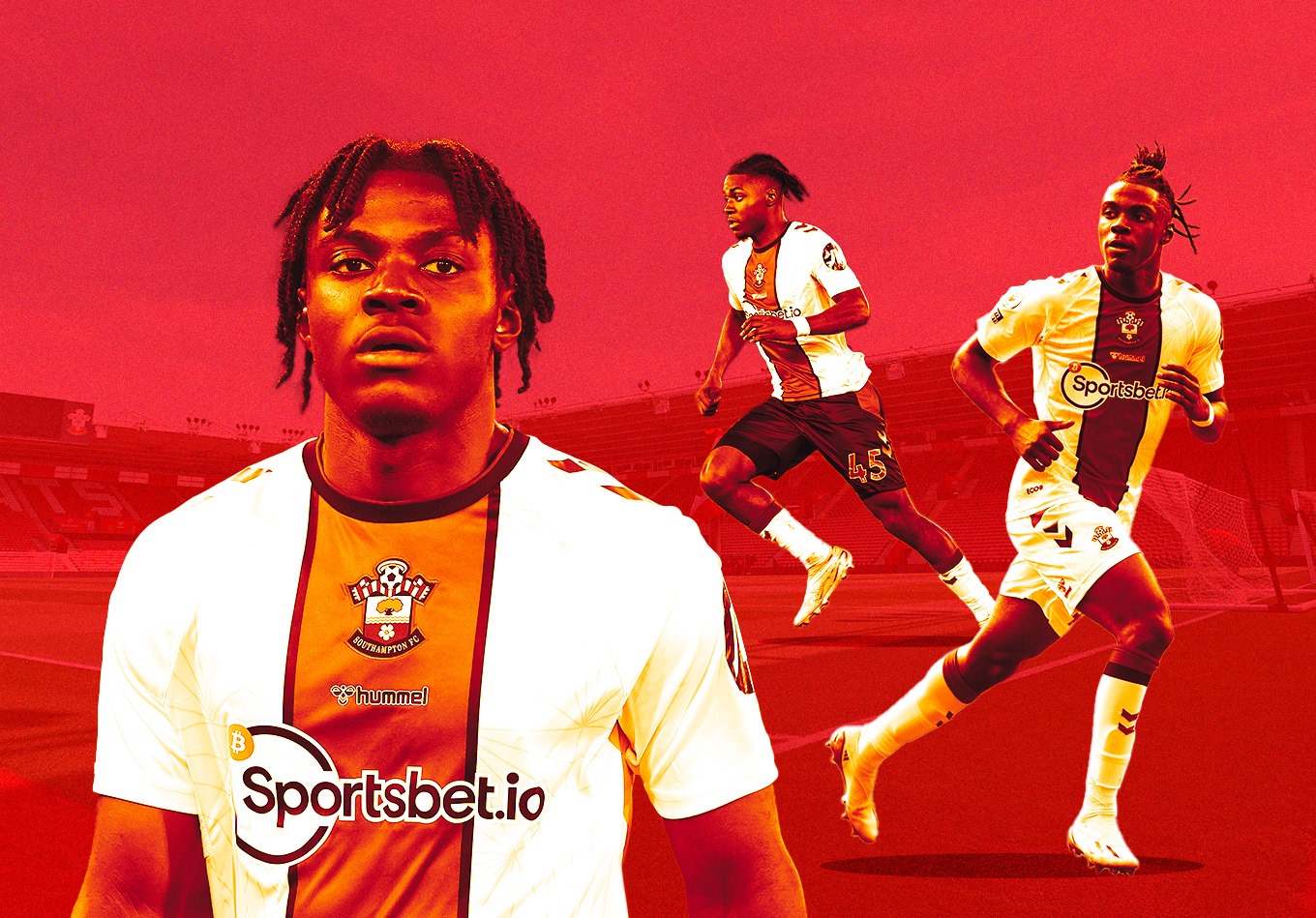Roméo Lavia is on his way to Chelsea, with Arsenal and Liverpool having also been linked to the 19-year-old midfielder.
In early March, interim Southampton manager Rubén Sellés chose to question Roméo Lavia for his performances.
“I will say he’s not impressed me,” Sellés said. “He has more football to offer and I expect him to offer more football. He’s not there yet. He needs to step up and move forward.
“Roméo has all the qualities to become a great player, but I don’t think he’s there yet. And this is why he didn’t impress me.”
Lavia may take some satisfaction from the fact that Sellés is now managing Reading in League One while he is back in the Premier League after completing a reported £58 million move to Chelsea.
In fairness to Sellés, it appeared to be more a motivational tactic than sincere criticism, but it probably came as a surprise to Southampton fans who considered the young midfielder to be their standout player after captain James Ward-Prowse in what was a largely forgettable campaign that saw them finish bottom of the table.
Lavia was a shining light, which is why so many big clubs were lining up to bring him back to the Premier League. Manchester City would not have inserted an option to buy Lavia back from Southampton for a reported £40m if they did not believe he could progress to the point where he would be good enough to return one day. However, that day arrived sooner than even City anticipated, with Chelsea stealing a march by moving for the Belgian midfielder now.
As we mentioned in our article on Southampton players who could attract interest this summer, only four other teenagers across Europe’s top five leagues played more than Lavia’s 2,231 minutes last season. He started more games than any other teenager in the Premier League, and it would surely have been more had he not sustained a hamstring injury early in the campaign that caused him to miss eight games between August and October.
Lavia was missed when he was absent. Southampton won just one league game of the nine they played without him last season. In fact, the game in which he came off with that hamstring injury was also the only one in which he scored, having equalised against Chelsea at St Mary’s before limping off on the hour in the 2-1 victory. At the age of 18 years and 236 days at the time, his strike from the edge of the box made him the fourth-youngest player to score a Premier League goal for Southampton after Michael Obafemi (18y 169d), Dexter Blackstock (18y 177d) and Sam Gallagher (18y 181d).
Lavia’s main contribution came elsewhere on the pitch though, more than capably playing the number 6 role even though so much else was going wrong around him.
Despite his age, he was clearly not intimidated by the Premier League, eager to win possession back for his team whenever possible. Sometimes he could be a little too eager, as his nine yellow cards suggest, but that he managed to avoid turning any of those into reds hints at a maturity when it’s needed. Only 15 midfielders who played at least 800 minutes in the Premier League won possession more than he did per 90 (7.5). He wasn’t just doing it near his own goal either, with only eight midfielders in the league winning the ball more often per 90 in the middle third of the pitch than his 4.6.
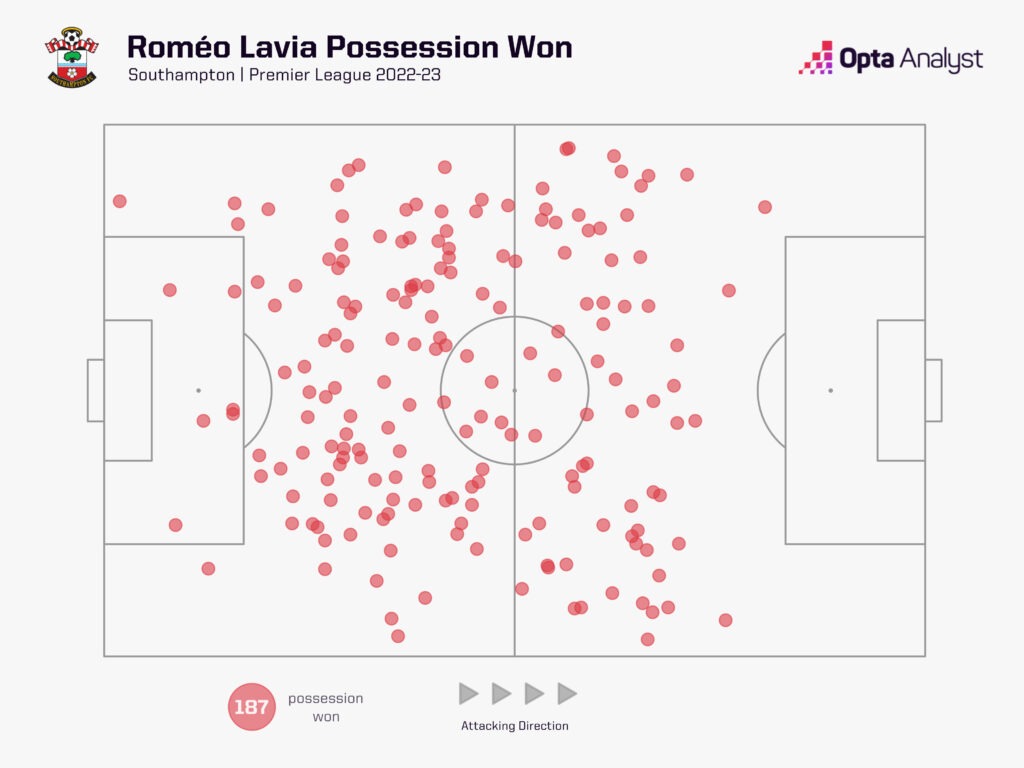
Of central midfielders who were teenagers at the start of last season in Europe’s top five leagues, Lavia was one of only three who made at least 60 tackles, along with Jude Bellingham (76) and Eduardo Camavinga (68), with his tackle success of 58.3% better than Bellingham’s 55.3. Camavinga’s was success 70.6%, though it should be noted he played several games at left back for Real Madrid.
It was Lavia’s impressive calmness on the ball that stood out even more, though. He was pressured more often than any Southampton player last season (18.8 pressures per 90) but was still able to complete 86.2% of his passes. That was the most of any Southampton player, but he also completed 79% when he was pressured by an opponent, showing similar ability as the likes of Thiago Alcântara and Pierre-Emile Højbjerg.
He may be a deep-lying midfielder, but Lavia gets involved going forward as well. He was Southampton’s fourth-most prominent figure in attacking sequence involvements in the Premier League last season, with only Ward-Prowse (130), Che Adams (87) and Mohamed Elyounoussi (74) recording more than his 65. Only Ward-Prowse (74) had more involvements in the build-up to a shot for Southampton last season than Lavia’s 40, while he created 14 chances, the same amount as Romain Perraud and just one fewer than Kyle Walker-Peters.
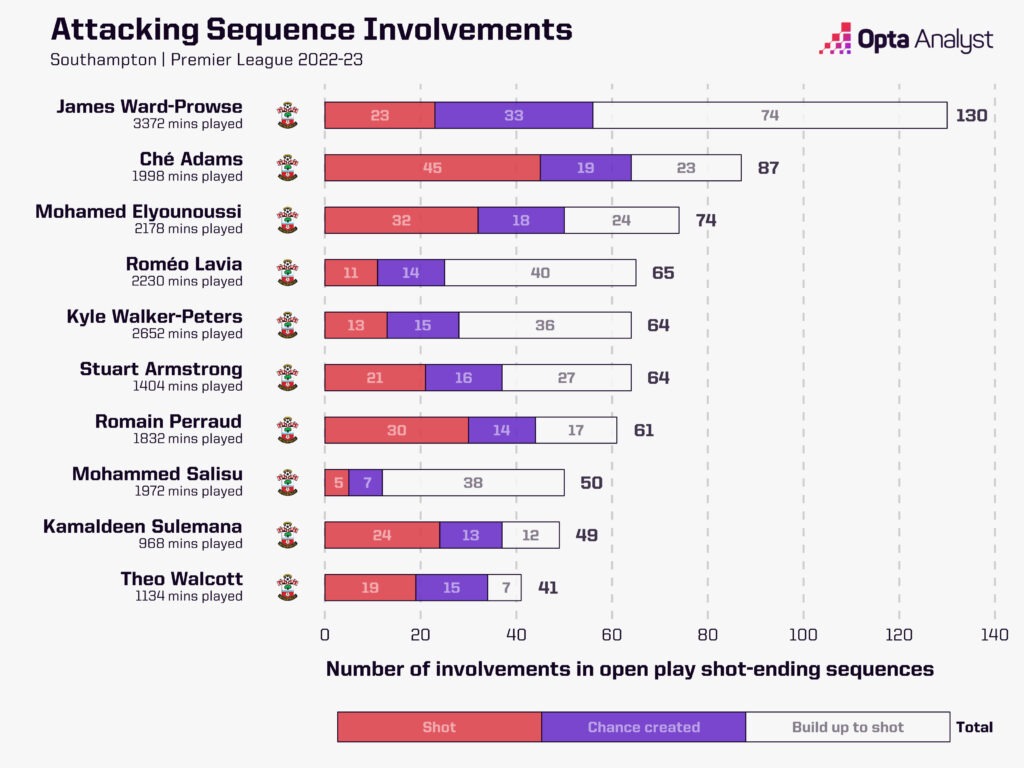
You can often see when he collects the ball that he has been partly educated in Manchester City’s system prior to moving to Southampton, having been brought to City from Anderlecht in 2020 before heading to the south coast two years later. Lavia is capable of receiving the ball under pressure and using impressive close control and dribbling to get out of trouble and/or advance his team up the field.
In the below example from Southampton’s 1-0 win at Chelsea in February, Lavia receives the ball from Jan Bednarek before turning away from Mateo Kovačić, who immediately closes him down.
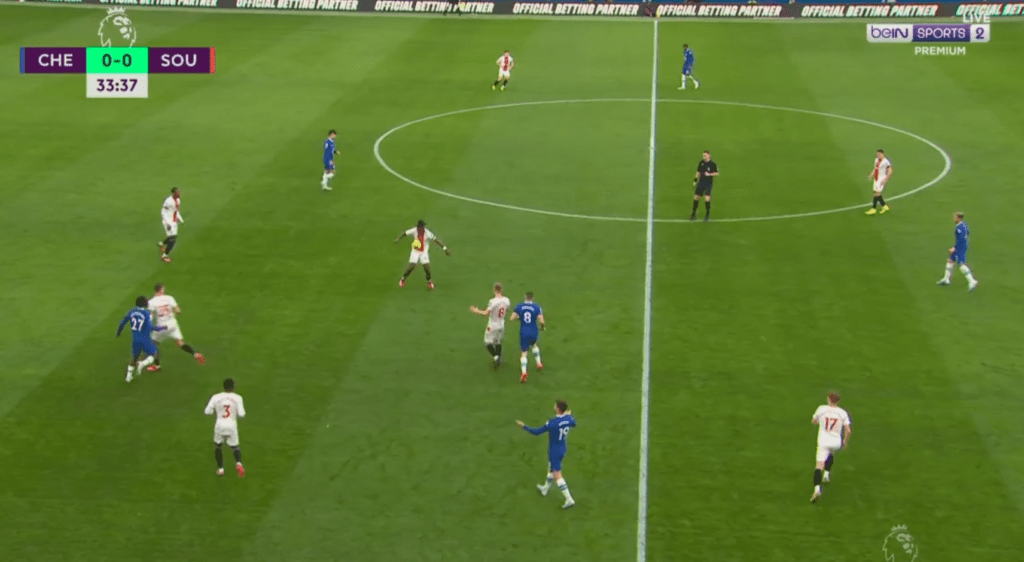
Lavia is able to shrug off the Croatian and break into the Chelsea half, before Enzo Fernández then makes a move towards him.
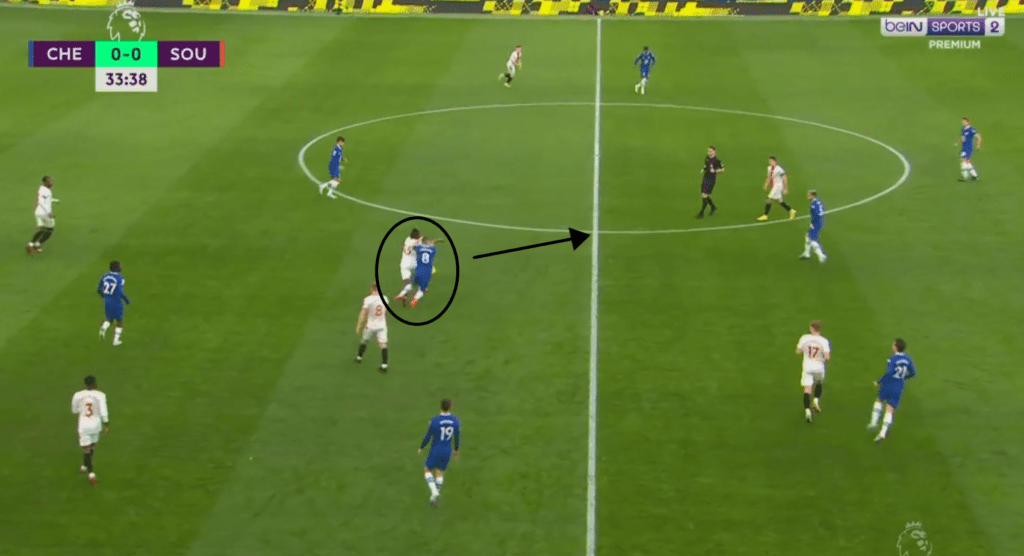
Lavia moves the ball to the left to evade the challenge of Fernández, leaving João Félix to run back from his own half to make a desperate attempt to try and stop his dribble.
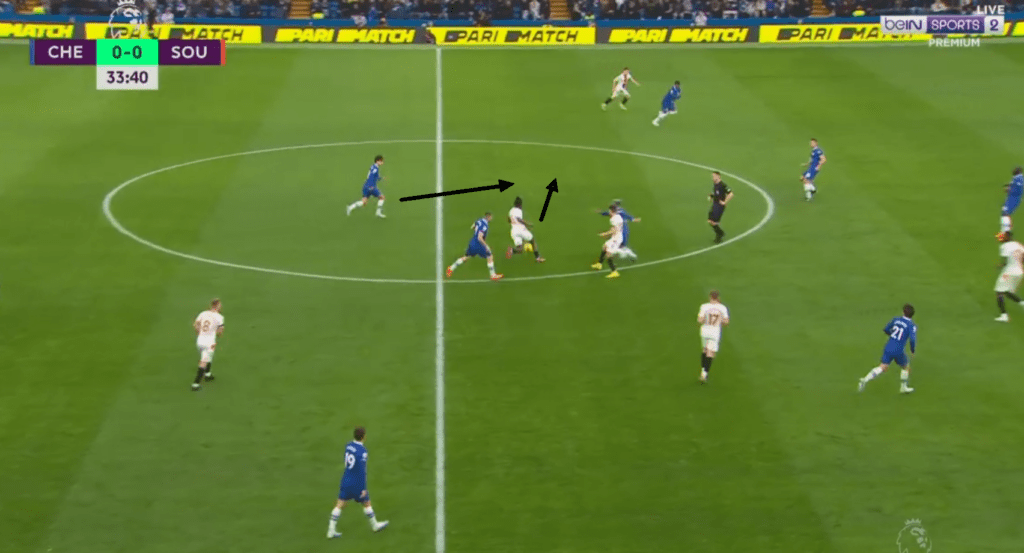
Another quick touch away by Lavia from the lunging Portuguese loanee earns him a free-kick.
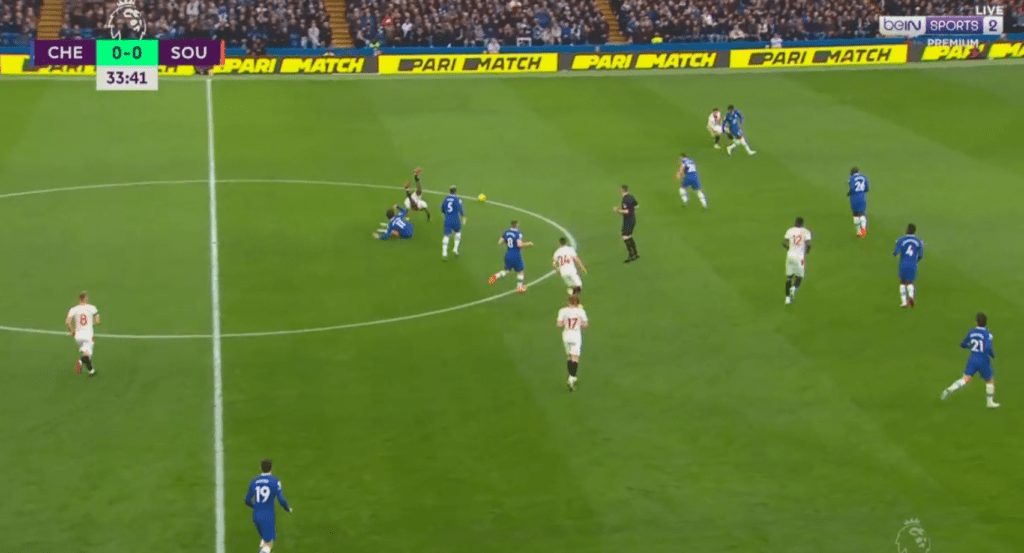
In that one passage of play he showed impressive decision-making, pace, strength and intelligence to get away from three elite players.
It must be remembered that Lavia doesn’t turn 20 until January 2024, so it is easy to see why Chelsea spent so much money on him. His numbers in several areas can improve, but his ceiling seems to be exceptionally high, with plenty of time to iron out the inevitable rawness that comes at this stage of development, though he must also make sure he continues to play regularly.
In April, Man City boss Pep Guardiola said of his former player: “I am really impressed with what Roméo has done and is doing. We had, and we have, an incredible opinion about him. We thought to keep him, but maybe he would not [get] enough minutes like he has in Southampton.”
When Lavia was still at City, fellow Belgian Kevin De Bruyne said: “If he continues his development, I think he will be a top player,” so while Selles was keen to downplay Lavia’s hype, some of the best in the game have been happy to talk him up.
As De Bruyne said, the key is his development. It felt like 2022-23 was a good season for Lavia’s growth as a player even if it wasn’t for his team, and whether Mauricio Pochettino gives him chances when he already has the likes of Enzo Fernández and Moisés Caicedo to choose from in midfield could be crucial in determining the extent to which Lavia fulfils the immense promise he has shown so far.
Compare Lavia and others with our new player radars below.
Enjoy this? Subscribe to our mailing list to receive exclusive weekly content. And follow us on Twitter too.
